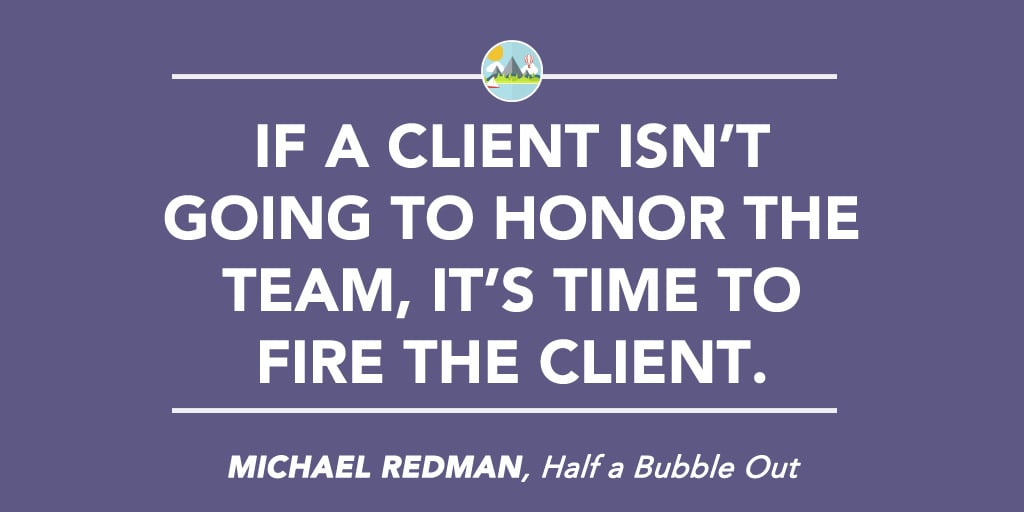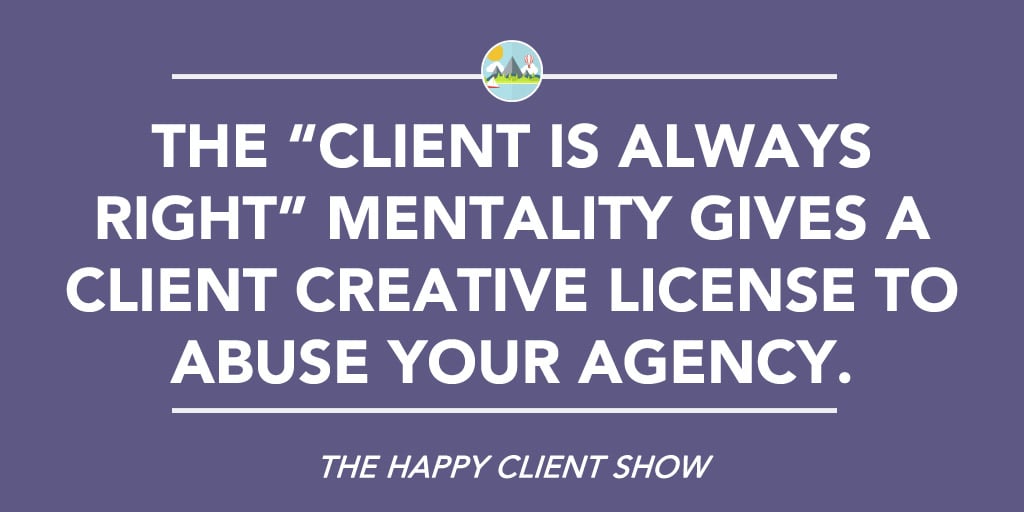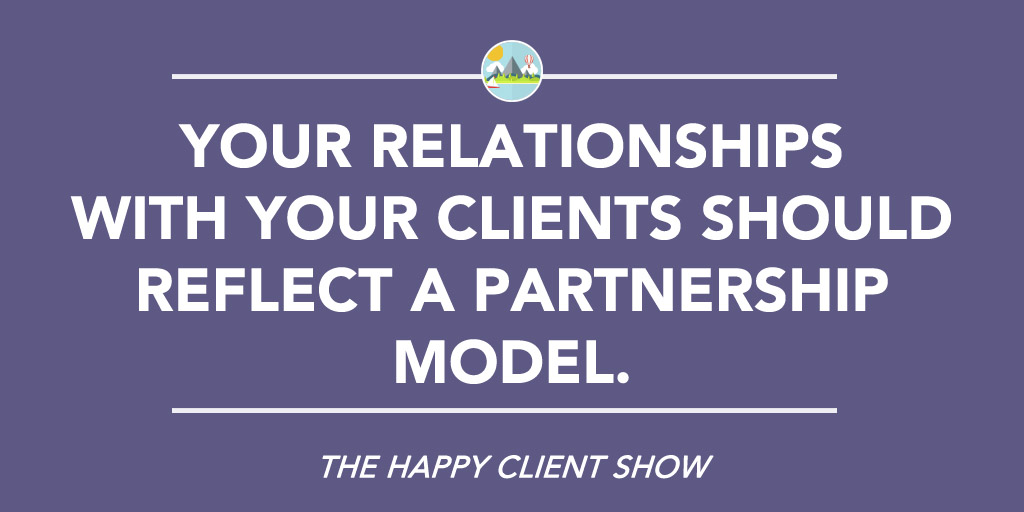Is the Client Always Right?
To chat with Gray and have ZenPilot lead your team through the last project management implementation you'll ever need, schedule a quick call here.
We’re not pulling any punches here.
In the first episode of The Happy Client Show, we tackle what seems to be a taboo topic in agency conversations—”Is the client always right?”
The phrase originated in 1909 and was coined by Harry Gordon Selfridge, a man who owned a department store in London. By now, we’re all familiar with this phrase, which bluntly translated means the customer is right no matter what.
Is the Client Truly Always Right?
The question we ask is simple: should this influence the way you offer agency services? From our experience, absolutely not.
We’ve come up with five reasons why the phrase “the customer is always right” is wrong and shouldn’t be the way you cultivate healthy client relationships.
It Kills Your Culture
Culture is everything in an agency.
When you drink the “customer is always right no matter what” Kool-Aid, you’re placing your focus solely on your clients. This in turn inevitably causes two major ripples in your agency:
You’re valuing your clients over your team:
This is a buzz kill in the office. If the client is always right then it doesn’t matter what your team does—it automatically places your team in the wrong by default. This creates an unhealthy relationship where the client can push those closest to you around and belittle them without any consequences. This will make your workplace toxic. It will also make your team wonder who you, as an agency owner/leader, are more loyal to, which will eat away at your culture chunk by chunk.
You’re putting the control of your agency in your client’s hands:
This also creates an environment where the flow of the day is in the hands of your client and not in the hands of your leadership. At any point, they could interrupt the day’s activities and since they’re always right, you’re going to drop everything—even if you shouldn’t and even if you should delay their requests until another time—to fulfil their demands.
The bottom line is this—just because clients help pay the bills doesn’t mean they can abuse your team and take advantage of your agency. You should strive for fair, mutually beneficial relationships founded in healthy mediums of communication.
How seriously should you value your team and the culture you create for them? Follow Half a Bubble Out CEO Michael Redman’s example. He is a vigorous protector of his team, and if a client isn’t going to honor the team, it is time to fire that client—not insist that they’re right.

It Gives Problematic Clients Unnecessary Power
There’s going to be a point where you have a client that’s causing issues. The posture of “the client is always right” will give them unnecessary power and creative license to abuse your team.

Unnecessary power also can look like what we refer to in the industry as “scoop creep.” Basically, this is where a client will slowly request more and more support or services unrelated and uncovered by your original agreement. If they are indeed “always right” then you’ll continue to honor these requests and will be taking on more than you originally agreed to and are getting compensated for.
If you’re running into scope creep then it’s time to set up a phone call or in-person meeting. During this meeting you need to discuss what’s happening and why it’s not OK for your relationship. Bring the issues out into the open and have a conversation about them.
From an operations standpoint, it’s extremely important to root your client relationships in a contract that is clear, specific and will tell exactly what both sides are responsible for. This will be a vital document to refer when a client is pushing for more than you both originally bargained.
A Business Relationship Should Be a Partnership
It’s unwise to position yourself as a hired gun.
As an agency, you should be positioning yourself a partner. This signifies lateral equality where you both are walking hand-and-hand to achieve a single goal. One side is not below or less significant than the other.
It’s important to shift from a granular tactician to a specialist and expert who’s there to lead them to success.

Another point that’s key to the partnership model is that you may not agree with one another, and guess what, that’s OK!
The “client is always right” mentality is one stemmed in fear where you’re afraid to disagree with your client. As a partner, every question that comes to the table isn’t automatically attributed to “you’re (client) right, I’m (agency) wrong.”
The Client is Hiring You for the Framework You Bring to the Table
The client is hiring you for your expertise. If they could do it on their own, they wouldn’t be coming to you. You should be bringing your proven framework and process to the table to their benefit.
Structure isn’t a bad thing either. PageLadder’s Robb Bailey uses the analogy of a swimming lane to keep clients focused and always driving towards the end goal.
At times, a client may read something or see something that might cause them to want to veer from the lane. If you’re a believer in “the client is always right” then you will agree to swerve from the plan and will consent to getting off track.
Again, the client is hiring you for your expertise and framework that’s seen success. You can’t be afraid to say, “hey, that doesn’t fit in with our plan to get you where you want to go, let’s stay on the course.”
Some Clients Just Aren’t the Right Fit
Don’t get me wrong, there will be certain points in your agency’s history where you won’t have a choice what clients you get to work with.
Eventually, however, there will come a milestone of stability where you can start selecting clients based on culture and fit. Too often, agencies don’t graduate from the mentality of taking on everyone who knocks on the door.
This might take some self evaluation, so here are a few questions to ask yourself:
- Who do we do the best work for?
- Industry
- Size
- Business model
- What agency framework has worked best for us?
- How can we better it?
- How can we communicate it better?
- How can we actively seek our best clients?
Final Thoughts
- Client relationships should be lateral partnerships built on equality, collaboration and mutually beneficial elements. You’re not a hired gun!
- They’re not just buying into your service set—they’re buying into your philosophy. Guide them well and to the best of your abilities.




